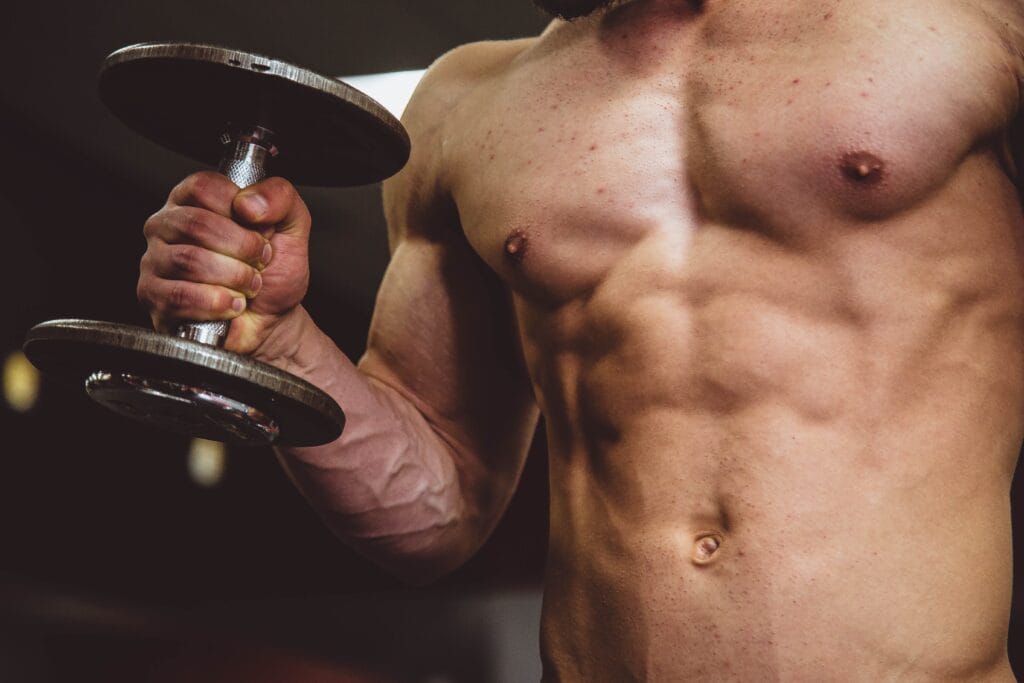If you’re looking to stack on some muscle or ‘tone up’, then this blog post is a must read! Whether that’s guys ‘bulking up’ or ladies ‘toning up’ what is the best way of achieving it from what you do within the gym? High Reps? Low Reps? Slow Eccentrics? Lots of Sets? Rest Times between Sets? Let’s look at the three key mechanisms of hypertrophy (muscle growth) and how to use them in your workout.
Progressive Overload: The Key to Building Muscle
A lot of people have heard of the legendary tale of Milo of Croton, a Greek Wrestler who developed tremendous strength qualities in a unique way. The unique method underpins one of the basic theories of strength and conditioning, known as, Progressive Overload.
The legendary tale states that one day, a new-born calf was born near Milo’s home. The wrestler decided to lift the small animal up and carry it on his shoulders. The next day, he returned and did it again. Milo continued this strategy for the next four years, putting the calf onto his shoulders each day as it grew, until he was no longer lifting a calf, but a four-year-old bull.
Key Principle of Milos tale that will see progression in any area of Strength and Conditioning is starting light with plenty of reps and gradually build and add weight as you go. It’s important to have consistency to allow your body to adapt.
So, what is the best way to increase lean muscle mass?
As there are so many training programmes out there that claim to be the holy grail of developing muscle mass. My pet peeve is fluff! The most effective programmes are the ones that keep things simple and focus on doing the basics well.
There are 3 Mechanisms for developing muscle hypertrophy: mechanical tension, muscle damage and metabolic stress. Let’s look at these in more detail…
1. Mechanical Tension
Mechanical tension is created by using a heavy load and performing exercises through a full range of motion for a period of time. The time the muscle spends under tension provided by the external load (barbell, dumbbell etc) creates Mechanical Tension in the muscle. The more time spent under load, the more mechanical tension provided.
However, tension alone won’t cause maximal muscle growth. In order to cause further hypertrophy stimulation, the muscle has to also go through a full range of motion. So, in other words, lift heavy weights in a controlled manner, through a full range of motion to promote muscle growth.
2. Muscle Damage
Muscle damage is an essential component of the muscle-building process. Muscle damage is sustained during resistance training, largely coming from eccentric and concentric contractions. D.O.Ms (Delayed Onset of Muscle Soreness) is a very common sensation experienced by individuals after undertaking exercise, this is a result of micro tears in the muscle as a result of damage.
Both types of contractions cause muscle damage, but eccentric contractions cause more damage to the muscle than concentric contractions. Hence why bodybuilders incorporate ‘negative’ reps into their training regimes. This onset of muscle damage triggers mTor pathways that then activates protein synthesis to occur and the rebuilding of the damaged muscle begin.
3. Metabolic Stress
Along with lifting heavy weights to create mechanical tension, it is also well researched that lifting moderate to light weights for higher repetitions, often associated with body building, will also promote muscle growth.
For those that have performed any sort of resistance training will have more than likely experienced, ‘the burn’ or ‘the pump’ as you reach the higher reps that’s then followed by short rest periods. A number of things are happening during the end stages of the set. With the muscles continually contracting and relaxing a blood pooling effect is created within the muscle (cell swelling – the pump). This, in turn, results in restricted blood flow to the muscle (occlusion) and with the lack of oxygenated blood being able to fuel the muscle (hypoxia) during the continual contractions. This leads to a large build-up of metabolites like lactate, hydrogen ions etc. The resulting metabolic stress placed on the muscles has an anabolic effect leading to molecular signalling and an increasing hormonal response by the body.
So, to sum things up…
Hypertrophy occurs as a result of a number of variables – Mechanical Tension, Muscular Damage, and Metabolic Stress. When combined, they have a very ‘anabolic’ effect on the body created by molecular signalling from the initial stimulus. This results in increased Testosterone and Growth Hormone levels that play a big role in triggering and maximising protein synthesis needed for muscles repair and muscle growth to occur.
So How Do You Apply These in a Workout?
Here is an example of some simple and effective exercises to incorporate into your own workouts to optimise building muscle.
Lower Body Workout
Exercise 1 – Mechanical Tension – Back Squat/Deadlift – 5 sets x 3 reps (Heavy) 3-4 mins Rest between sets
Exercise 2 – Muscle Damage – Romanian Deadlift – 4 sets x 8 reps (4/0/X/1) 4 sec Lowering phase, no pause at the end range of motion, explode back up, 1 sec reset and repeat – 90 seconds rest
Exercise 3 – Metabolic Stress – Leg Press – 4 sets x 20 reps 60 sec Rest between set
Upper Body Workout
Exercise 1 – Mechanical Tension – Bench Press – 5 sets x 5 reps (Heavy) 3-4 mins Rest between sets
Exercise 2 – Muscle Damage – Pull Ups – 4 sets x 5 reps (4/0/X/1) 4 sec Lowering phase, no pause at the end range of motion, explode back up, 1 sec reset and repeat – 90 seconds rest
Exercise 3 – Metabolic Stress – Dumbbell Curls – 4 sets x 20 reps 60 sec Rest between set
Do you need help with a workout plan focused specifically on building muscle? Get in touch with our coaches to discuss a custom hypertrophy programme!



